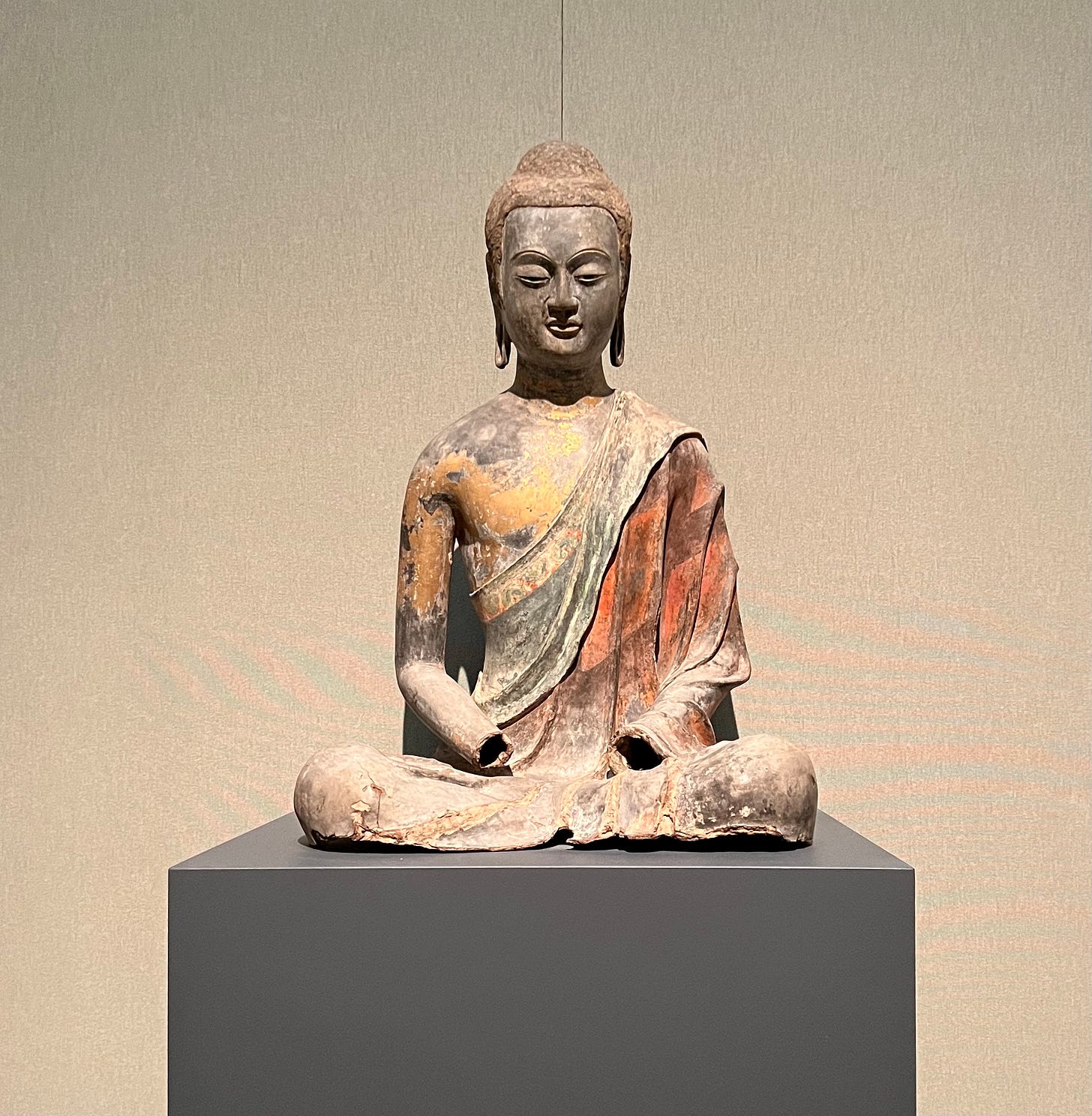
Last Friday after work, I hustled to The Metropolitan Museum of Art to see the fashion exhibit, “Karl Lagerfeld: A Line of Beauty” before it closed, a rare act of spontaneity made possible by my nanny. I was expecting a line of tourists trailing down the marble stairs, but the museum had streamlined the process. I scanned a QR code, and would be informed via text when it was time to line up for the show. This gave me 60 to 70 minutes to wander the museum alone - no visiting relatives to entertain, no children to wrangle, no coworkers to turn the next hour into a meeting. I’d had to check my backpack, and my phone was my only companion. I felt weightless as I wandered up the central staircase with no particular destination.
I found myself in the Asian Art section in a gallery lined with sculptures of Buddhas. As I gazed at their peaceful forms, I was struck by the renderings of cloth, the sumptuous folds that draped every deity. Constructed in bronze, marble, stone and wood, these materials had been manipulated to capture the essence of fabric in its most graceful and perfect form. Layers of cloth functioned like landscape, grounding the figures and mimicking rolling hills or ocean waves. Sometimes the effect was more stylized and symmetrical, while others renderings made the textiles seem almost real.
It occurred to me then that cloth was present in figurative sculptures in every department of the museum, from the Medieval priests to the Egyptian pharaohs to the Greek and Roman goddesses. In every era and in every part of the world, artists and artisans had represented folds of fabric; they had studied the shadows, the supple curves, the soft and irregular lines, as nuanced as the body itself. The desire to capture the romance of a textile was collective. The thought felt obvious, but also comforting.
Then my phone buzzed. It was time to enter Karl’s world. Time to focus not on the universality of cloth, but the specificity of one designer’s vision. Showcasing his creations for Balmain, Chloé, Fendi, Chanel, and his eponymous label, the exhibit featured 180 garments representing Lagerfeld’s incredible 65-year career, from the 1950s to his final collection in 2019.
Of the many spectacular and inspiring pieces, one of my favorites was a white Chanel ensemble from the 2018 spring/summer haute couture collection featuring a textural cape of ostrich feathers, clear plastic paillettes, and silk organza flowers layered over a waistcoat and trousers. This shimmering cape unfurled from the tailored silhouette like wings, merging feminine and masculine codes of dress. Part human, part avian, the ethereal suit-gown was rooted in the familiar, yet impossibly wild. As I craned my neck to study the piece on its pedestal high above, a voice spoke up inside of me: I would wear that. I didn’t know where or how or who was asking in this imaginary scenario, but apparently, my answer was yes.
To supplement the garments and the stories behind them, the exhibit included video interviews with members of Lagerfeld’s atelier, the patient French ladies who had interpreted his signature sketches, which were part technical drawings, part expressive illustrations, and brought his ideas to life. This was a reminder that he did not - could not - have accomplished this body of work alone.
I left the museum that night feeling both spiritually full and hungry to make something. I’m not religious, and have never regularly attended a place of worship in my adult life. As imperfect and complicated as museums can be, visiting The Met has always felt like a sacred experience, a reminder that the world is bigger than me, that beauty survives, and that I will too.
Links
If you missed the show, I recommend checking out the book. It’s a little pricey, but a work of art in and of itself.
This video of curator, Andrew Bolton, walking the show and speaking about the themes is great because there are no tourists or tall people to block the clothes.
A mildly skeptical NY Times review of the show that gives it some context.
As always, thank you for reading!



